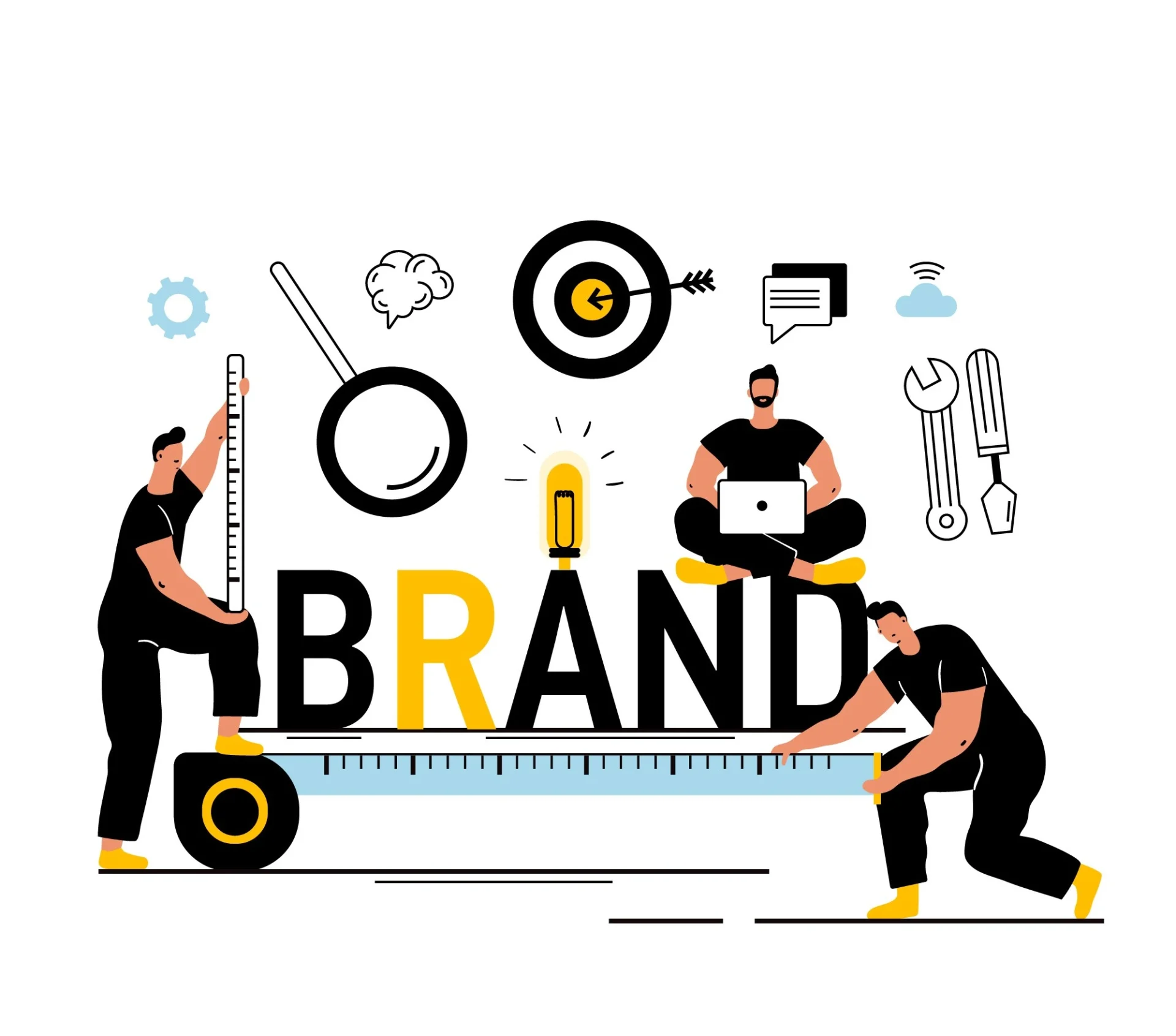In today’s hypercompetitive market, If you launch a business without a strong brand identity is like whispering in a stadium. It doesn’t matter if you’re a startup founder, solopreneur, or a team preparing for launch, strategic brand development is non-negotiable.
Brand Development is the base, it allows people to feel connected to your business.
This guide will help you understand the full process of how to build a brand from scratch to covering strategy, visuals, naming, storytelling, and more. Let’s explore the building blocks of creating a brand identity that resonates and grows.

Why Does Brand Development Matters More Than Ever?
It’s More Than a Logo, It’s Your Business Identity
When people hear “branding or brand development” many think of logos and color palettes. But brand development is much more than that. It affects how people perceive you, trust you, and choose you. From how you sound to what you stand for, your brand development is the emotional and strategic face of your business, your goal is building confidence with your audience.
Strong Brands Win on Trust, Emotion, and Differentiation
We have to understand that strong brands like Apple, Patagonia, or Notion don’t compete only on features. They thrive because they have:
- A clear purpose
- A consistent story
- A distinctive personality
In a competitive market, creating a brand identity that emotionally connects can be your greatest strength.
Step 1 – What Does Your Brand Stand For?
Purpose, Values, and Positioning
A brand development starts with clarity, so here you have to ask yourself:
- Why does your business exist (beyond making money)?
- What values shape your behavior and decisions?
- What specific position do you want to own in the minds of your audience?
These will give you answers from the core of your brand development strategy.
Clarifying Your Audience and Category
One of the first steps in developing a brand identity from zero is defining your audience and in what category you compete. Get specific about demographics, psychographics, pain points, and aspirations.
You can also define your “category”: Are you an app? A platform? A boutique service?
Avoiding Vague or Generic Positioning
Generic statements like “we value innovation” don’t cut through. Strong brands have a unique point of view. Position yourself with language and intent that make your audience say, “This is for me.”
Step 2 – Choose a Name That Sticks (and Scales)
Brainstorming Methods and Brand Naming Frameworks
Creating a brand name is part of the brand development and one of the most creative yet strategic tasks. You can use frameworks like:
- Real words with twist: Uber, Apple, etc
- Invented words: Kodak or Google
- Compound names: Facebook or HubSpot
- Evocative metaphors: Drift, Slack, etc
Take advantage of brand naming strategies for new businesses that reflect your personality and promise.
How to Test a Brand Name for Uniqueness, Meaning, and Recall
Before choosing a name you have to consider:
- Check for meaning in other languages
- Ensure pronunciation is easy
- Run quick memory tests with potential users
- Validate resonance with your target audience
Legal Considerations and Domain Checks
Ensure the name is legally protectable, especially if you want to trademark it. Also, secure the domain (domain.com) and social handles.
Step 3 – Craft Your Brand Story and Voice
Why Storytelling Is the Heart of Emotional Branding
Your efforts should focus on the importance of storytelling in branding. You have to remember that your brand story is the thread that ties together your origin, mission, and customer transformation. It gives meaning to your product or service.
A great story covers:
- The problem
- Your unique perspective or journey
- The promise of change
How to Define Your Tone of Voice
Your brand voice is how you communicate. It should reflect your values and audience. Are you bold? Playful? Elegant? Or Professional?
Here are some examples of how to define your brand voice to ensure your message feels consistent and authentic.

Examples of Consistent Brand Narratives
- Mailchimp: Quirky and creative
- Nike: Empowering and direct
- Stripe: Clean and professional
Use your story and voice across the web, ads, packaging, and social media to build recognition.
Step 4 – Build a Strong Visual Identity
Logo, Typography, Color Palette, and Visual Patterns
Once your message is clear,you have to translate it visually. How to create a strong visual identity involves:
- A scalable logo
- A defined color palette with meaning
- Paired typography that aligns with your tone
- If you use repeated design elements to build familiarity
Aligning Visuals With Your Brand Values
You must be consistent with your brand identity, If you’re a minimalist brand, don’t over-design. If you’re vibrant and community-driven, your palette and imagery should reflect that. The goal is to communicate without saying a word.
Tips for Designing or Choosing Assets Intentionally
- Use mockups to test across devices
- Ensure accessibility (color contrast, readability)
- Think about how it scales for print, mobile, and merch
If you’re bootstrapping, consider hiring a designer to create a basic brand kit.
Step 5 – Maintain Consistency Across Every Touchpoint
Building a Brand Kit and Usage Guidelines
To ensure brand consistency across platforms, you have to create a brand kit that includes:
- Logo usage rules
- Color codes
- Fonts and hierarchy
- Brand voice do’s and don’ts
This becomes the map for any partner, freelancer, or new team member.
Why Consistency Builds Credibility and Memory
Consistency builds trust. When your website, social channels, proposals, and packaging all feel aligned, people believe you and they will know that it’s your identity.
Real Examples of Consistent Multi-Channel Branding
Look at how brands like Airbnb or Glossier maintain voice and visuals across email, app, ads, and more. This strengthens brand recall and emotional connection.
Step 6 – Launch and Evolve Your Brand
How to Softly Launch Your Brand
You don’t need a massive reveal. Many brand building (Brand Development) for startups and entrepreneurs begins with a soft launch like: sharing their story on socials, sometimes, they launch a beta site or MVP. On the other hand, as a strategy they send personal notes to their early believers.
Collect Feedback and Evolve Strategically
Listen to how your audience responds. What questions do they ask? What confuses them? Use insights to adapt your visuals, language, or positioning.
Scaling Brand Assets and Message as Your Business Grows
As your business expands, so should your assets:
- Branded templates
- Social content kits
- Presentation decks
How to brand your business isn’t a one-and-done task. It’s a living system that matures with your company.
Brand Development Conclusion: Start Small, Think Big, Stay Consistent
To recap:
- Strong brand development starts with purpose and positioning.
- Your brand name is not just a name, it’s your identity.
- Consistency across touchpoints builds trust and recognition
Whether you’re learning how to start a brand development, or you’re deep into creating a brand identity, remember this:
Your brand isn’t just what you say. It’s what people remember.

Need Help Creating a Brand That Connects?
At Stremeline, we help businesses like yours build brands that stand out and scale. From brand naming strategies to identity systems, we’re your creative partner.
👉 Let’s build your brand from zero — the right way.



